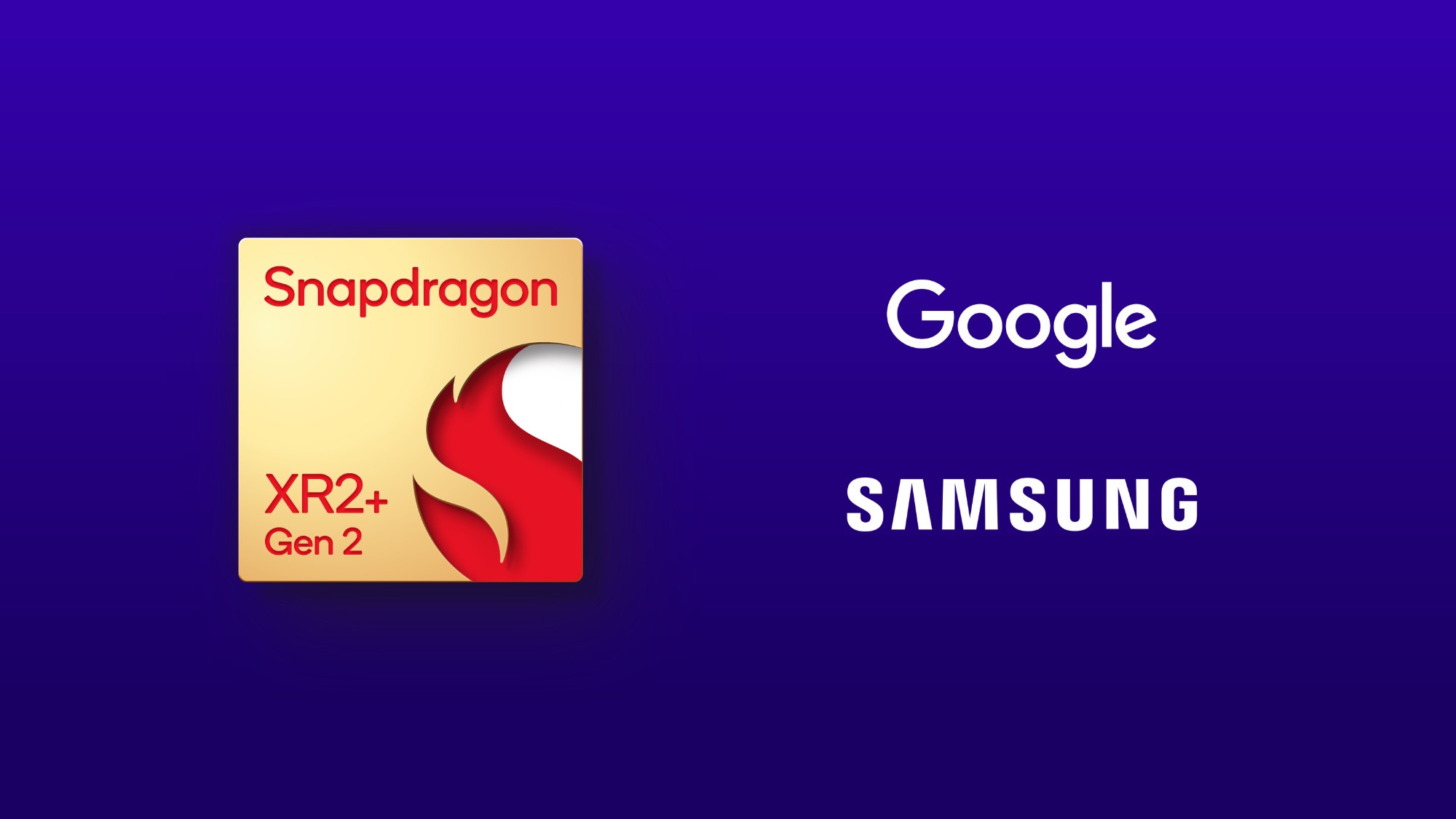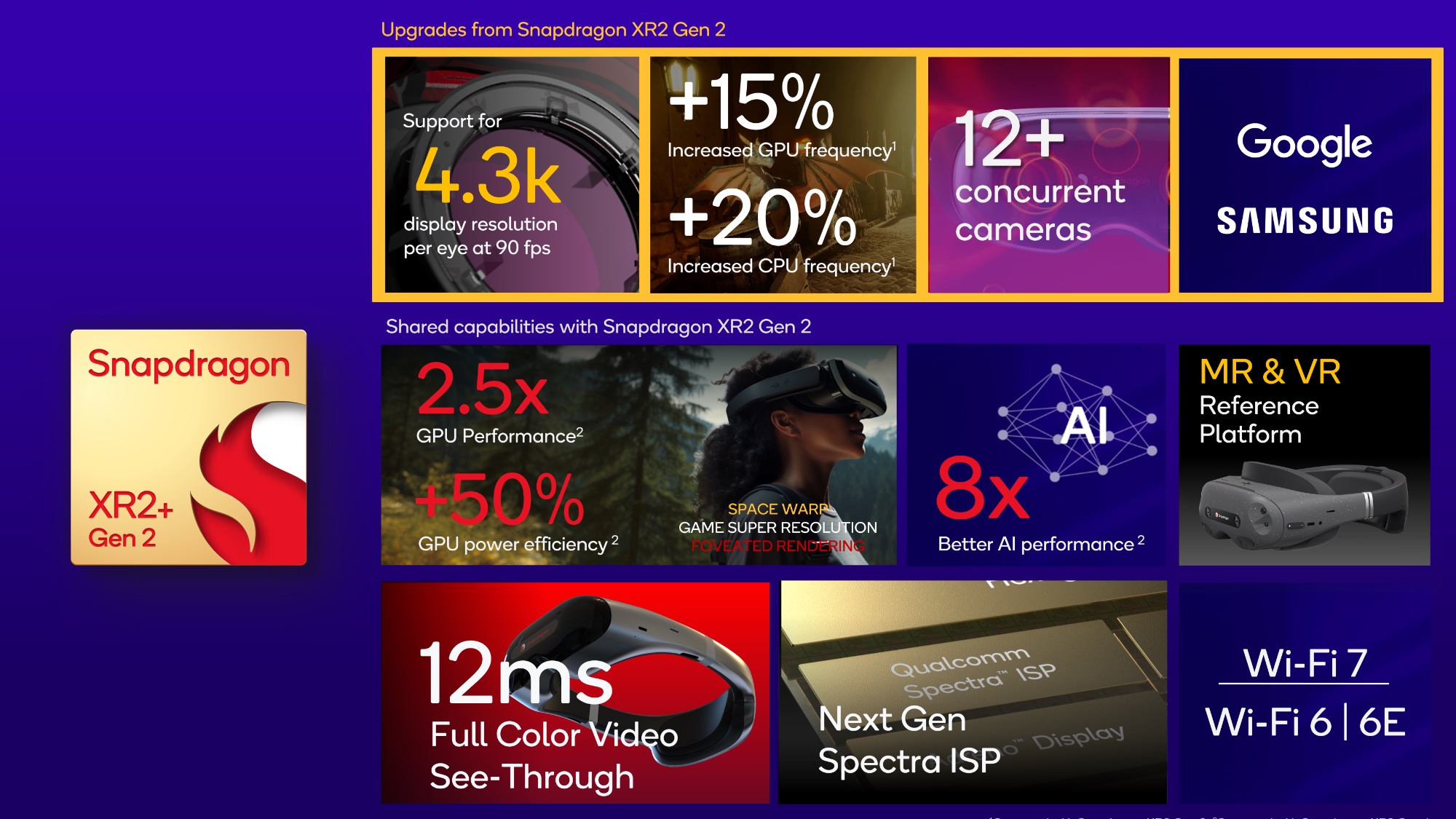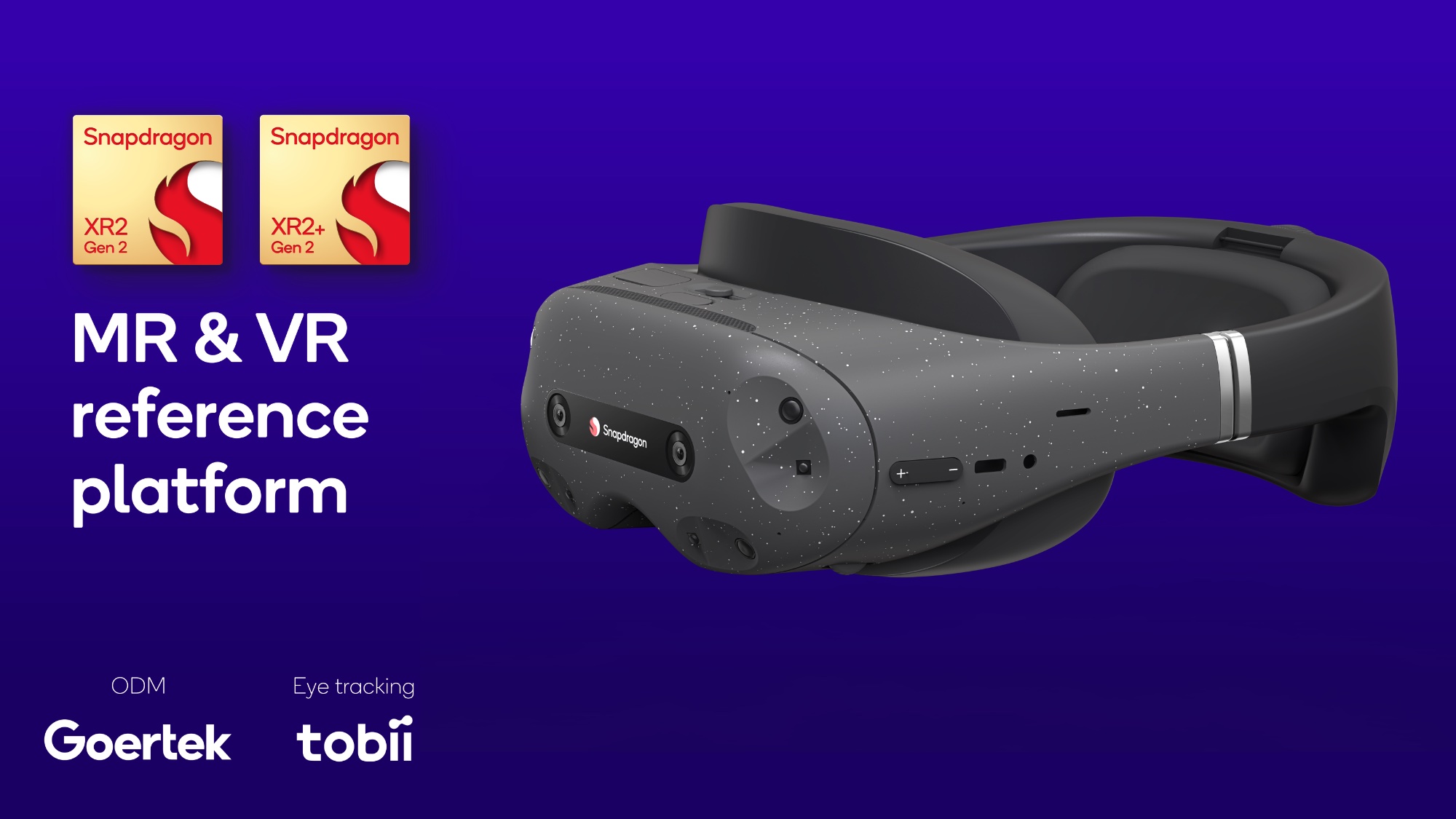
The spatial computing wars are heating up as Qualcomm has just announced its new Snapdragon XR2+ Gen 2 platform that will go head-to-head with the Apple Vision Pro and its M2 and R1 chips.
Samsung and Google are officially partnering to "provide leading XR experiences" by leveraging the new XR2+ Gen 2 chip. The companies previously announced that they were teaming up on a new mixed-reality device in February last year.
So what makes the Snapdragon XR2+ Gen 2 special? It packs serious capabilities, including support for up to 4.3K resolution in each eye running at 90 frames per second. You also get 15% increased GPU frequency and 20% increased CPU frequency compared to the XR2 Gen 2 chip that powers the Meta Quest 3 headset.

The Snapdragon XR2+ Gen 2 chip also supports up to 12 concurrent cameras (just like Apple Vision Pro) for tracking the user and your surroundings. The aim is to provide experiences that merge the physical and digital worlds.
Possible use cases according to Qualcomm include the ability to view "room-scale screens, life-size overlays and virtual desktops."
Samsung and Google aren't providing any further details at this time on what they have cooking with the XR2+ Gen 2, but they both issued statements voicing their support and excitement for the platform as part of a joint press release.
“Samsung is thrilled to collaborate with Qualcomm Technologies and Google in revolutionizing the mobile industry once more," said Inkang Song, vice president and head of technology strategy team at Samsung Electronics, expressed his excitement, "With Samsung's mobile expertise and our joint commitment, we aim to create the best-in-class XR experience for Galaxy users.”

“We look forward to continuing our collaboration with Qualcomm Technologies and Samsung on the future of immersive and spatial XR,” said Shahram Izadi, vice president of AR at Google. “We’re excited for the Android ecosystem to take advantage of Snapdragon XR2+ Gen 2’s capabilities and enable new experiences.”
Throwing shade at Apple Vision Pro
While we wait for hardware to materialize, Qualcomm is partnering with Goertek and eye tracking firm Tobii on a new MR & VR reference design to help other companies bring spatial computing devices to market powered by the Snapdragon XR2+ Gen 2 and previous XR2 Gen 2.
So what about the Apple Vision Pro and how will headsets powered by the Snapdragon XR2+ Gen 2 stack up? Said Bakadir, senior director of Product Management at Qualcomm Technologies, says that we should see devices hit the market that are "way below $3,500," referencing the Vision Pro's lofty price point.
And when asked about Apple's dual-chip design and if partners will be able to pair multiple Qualcomm chips on their own spatial computing headsets, Said shared that he doesn't believe a dual architecture is necessary. "We don't think it's the right thing to do," said Said.
Only time will tell whose strategy will win over consumers, but we look forward to seeing the first XR2+ Gen 2 headsets come to market so we can put them to the test.







